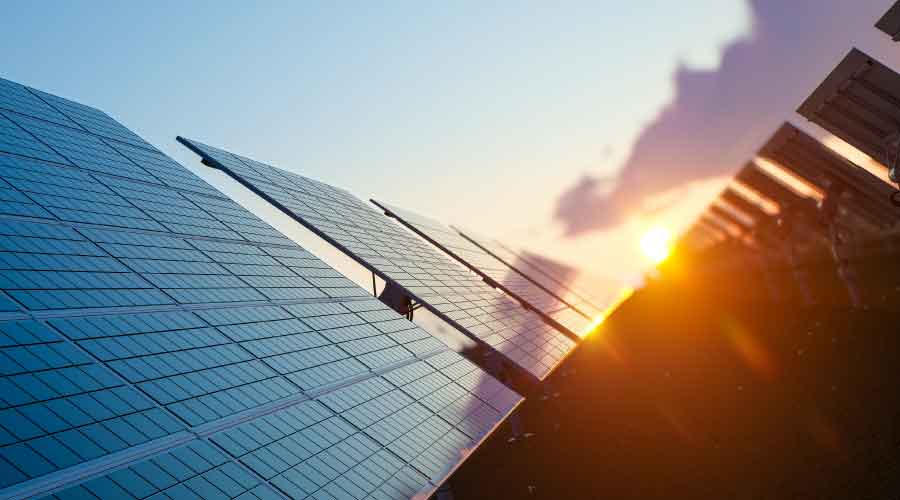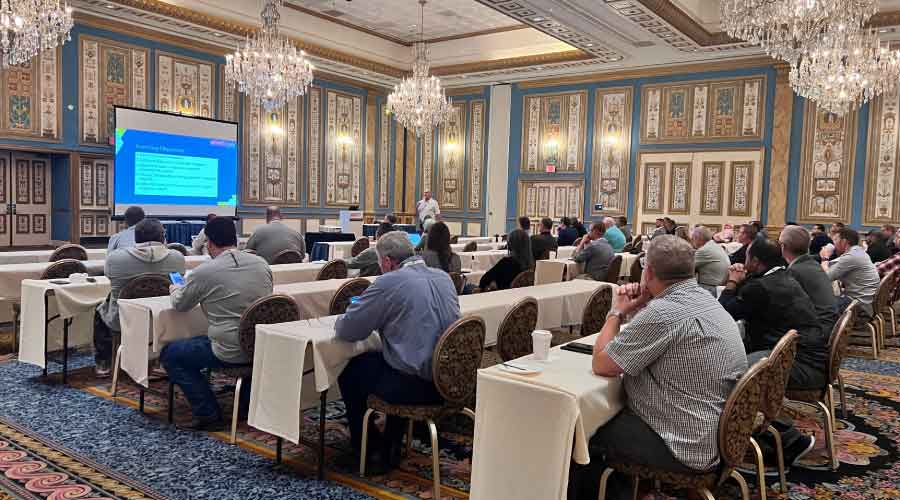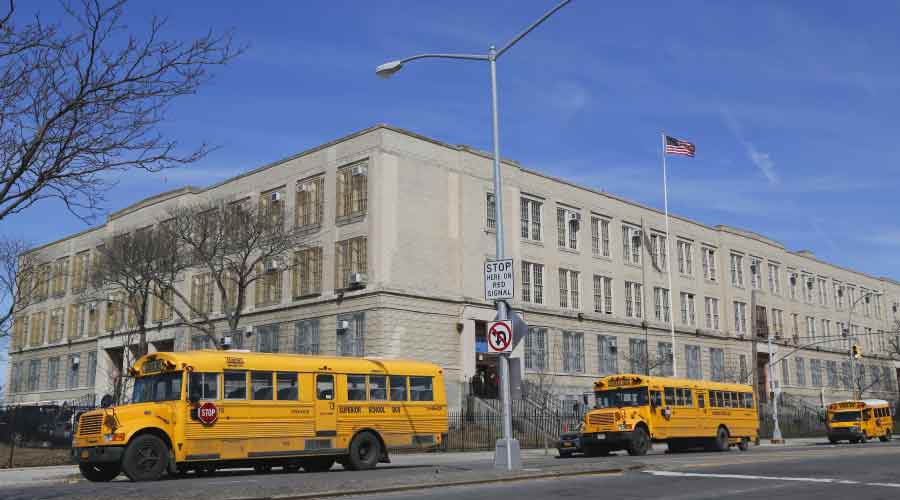
Vertical Solar Array Powers Commercial Office Building in Wisconsin
Commercial building owner takes unique approach to powering seven-story property. November 16, 2022
By Dave Lubach, Managing Editor
Commercial buildings that can show real energy savings have advantages over their counterparts in the race to secure future tenants. Solar-powered buildings can be a cheaper and more sustainable energy option for building owners to consider when building new or retrofitting existing buildings.
One example of how commercial properties can use solar energy at a high-rise office building is installed at an office building in Shorewood, Wisconsin, a suburb of Milwaukee. The building is equipped with an 83-foot vertical solar array on one side of the seven-story building.
Located on a busy commercial block, the challenge exists about where to place a solar array in order for it to be effective. The solution that the building owners used was to install the array on one side of the building to “transform the brick wall into a valuable asset,” a press release noted.
According to a press release, the solar array is projected to produce approximately 58,000 kilowatt hours annually. The kilowatt hours are the equivalent to the annual energy use of six homes.
“Solar represents a huge market opportunity for commercial office locations,” says Mike O’Connor, co-founder of building owner Dominion Properties. “Being an office building, where typical working hours are when the most energy is used, a proportion of the building’s energy will come from solar. This means our tenants can enjoy savings on their energy bills, particularly important today as the cost of energy continues to skyrocket.”
The Shorewood office building features a 54-kilowatt installation with 120 solar modules anchored on an 83-foot-high by 23-foot-wide array that includes three SolarEdge inverters and power optimizers. The inverters and optimizers are attached to the modules to maximize performance.
Producing maximum solar power with such an array can be a challenge because of shading from neighboring buildings, according to the lead installer from Arch Solar.
“This far north in Milwaukee, the ideal installation for modules is at a 23-degree angle for maximum sun exposure and to help snow clear,” says JD Smith, Arch Solar’s head of business development. “This is a more complex challenge, as the modules need to be mounted at a 90-degree angle. For Dominion Properties, maximizing power generation to ensure maximum savings for tenants was a non-negotiable, so having access to this technology is what made this project possible.”
The Shorewood arrays are built with safety features including arc fault detection, temperature sensors in the AC/DC terminal blocks and a function that automatically reduces voltage in each solar module to a touch-safe level to enable safe roof access for maintenance teams or firefighters.
“As an installer, safety is always front of mind when it comes to installations for customers, even more so in this case given the central locality of this building,” Smith says.
With the opportunities for savings from solar power expanding, O’Connor intends to continue using solar installations for his company’s future projects.
“This project is the first of many, and we hope that it will encourage other developers to make use of otherwise wasted space on high-rise buildings by embracing solar as a clean, cost-saving energy source,” he says.
Dave Lubach is managing editor for the facilities market.
Next
Read next on FacilitiesNet












